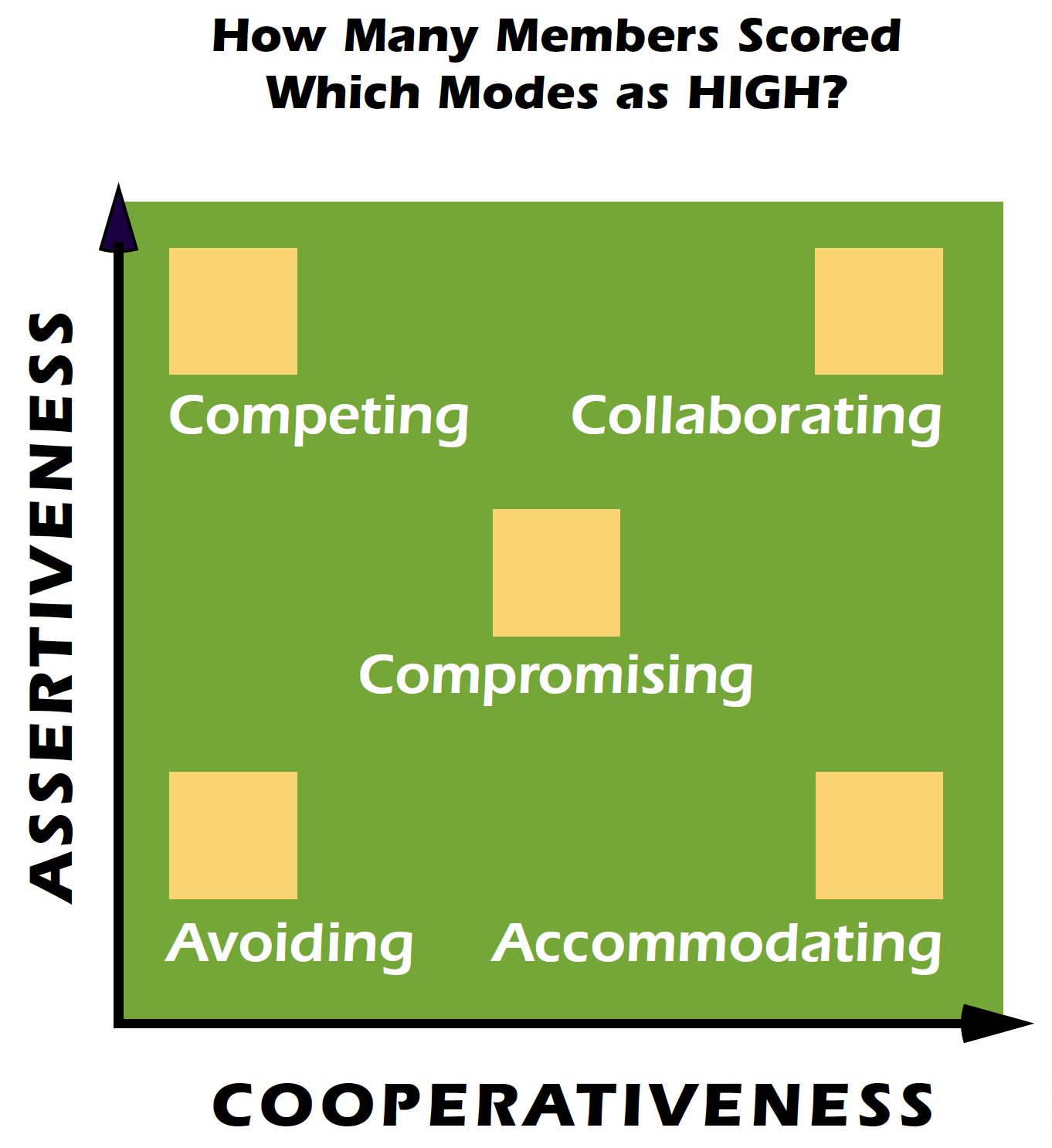07 Jan An Experiential Exercise to Dramatize the Five Conflict Modes
Ralph H. Kilmann, co-author of the Thomas-Kilmann Instrument (TKI)
Several decades ago, I developed an experiential exercise for classroom and workshop settings in order to accelerate people’s understanding and internalization of the five modes. I first assess the conflict modes of 20 to 50 participants, without their scoring their results. I do that for them so they won’t see their high or low modes. Usually, most of the participants know nothing about the TKI beforehand or the meaning of conflict modes. All they get to know are these five codes: C1, C2, C3, A1, and A2 (for competing, collaborating, compromising, avoiding, and accommodating, respectively).

I then form the community into FIVE groups — C1, C2, C3, A1, and A2 — by noting which individuals have the highest mode score in each category. Since people can have more than one mode in the top 25th percentile, I arbitrarily distribute the tied assignments in order to balance the size of the five groups.

Next, I have the five groups go through one of the classic experiential exercises, developed and/or inspired by Jay Hall: Lost on the Moon, Lost at Sea, Desert Survival, and the like. Basically, group members first rank order fifteen items (which survived the crash or the fire) in the order of each item’s importance for success (such as reaching the mother ship after a crash landing on the moon). Then the group discusses the different rankings and underlying beliefs of its members, thus having to resolve its conflicts, one way or another. In essence, each group has to develop a group ranking of those same fifteen items by resolving the different individual rankings.
When the groups have completed this assignment, the facilitator provides the “right answer” of the rankings, which are based on the views and rationale of noted experts in the survival field. This affords some very interesting calculations: (1) Which individual in each group was initially closest to the expert ranking before the group discussion began? (2) What is the average ranking of the members of each group, which represents the modal wisdom in the group BEFORE any group discussion took place? (3) How close did each group ranking get to the expert ranking in these respects: Was the group’s ranking better or worse than the group’s mathematical average of individual rankings, that is, did the group get better with the discussion or get worse? And was the group’s ranking better or worse than its best member’s ranking, that is, did the group develop a synergistic ranking that was even closer to the expert’s than its most knowledgeable group member?
While I could spend more time discussing all the nuances of these quantitative comparisons and what they say about the quality of the discussion in each group, again and again it was the MODAL HIGHEST CONFLICT MODE that swayed each group in a certain direction.
In particular, in the high competing groups, the members are more concerned about having the group ranking become as close to their own ranking as possible, with little concern about developing a group ranking that is closest to the expert’s.
The collaborating group incessantly discusses what is behind each person’s view on each of the fifteen survival items, even though several of these items are ranked at the bottom of the heap (and thus are unimportant in surviving the ordeal).
The groups in which members are high in compromising merely vote on each item or use a calculator to develop a mathematical average (much like what is done later to measure each group’s success beyond that very average!).
The avoiding group spends most of its time on other topics, such as the previous night’s football game. And members of the accommodating group say to one another: “If you think that item should be #1 (and so forth), that’s fine with me.”
It never fails to amaze me how this experiential exercise with the TKI powerfully demonstrates the way the modes work, because the concentration of the high mode in the group serves to magnify its effects…due to the power of group dynamics. So if you ever need an exercise to demonstrate that different modes result in different outcomes, try it out!
Kilmann Diagnostics offers a series of eleven recorded online courses and nine assessment tools on the four timeless topics: conflict management, change management, consciousness, and transformation. By taking these courses and passing the Final Exams, you can earn your Certification in Conflict and Change Management with the Thomas-Kilmann Instrument (TKI). For the most up-to-date and comprehensive discussion of Dr. Kilmann’s theories and methods, see his 2021 Legacy Book: Creating a Quantum Organization: The Whys & Hows of Implementing Eight Tracks for Long-term success.




